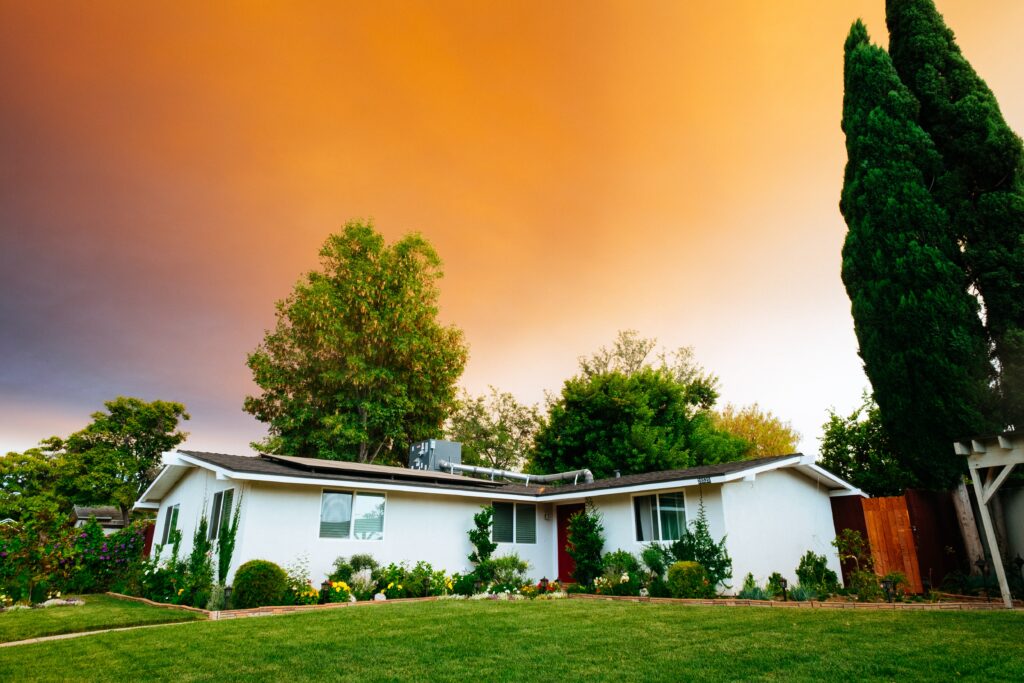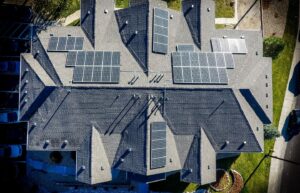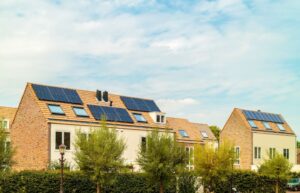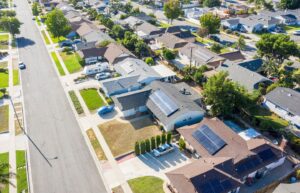Wondering if adopting a solar energy system would make sense for your household? As solar technologies advance, going solar is more accessible than ever – but figuring out just how many solar panels you need to power your four-bedroom home can be daunting. Never fear: we’re here to walk you through the process.
Summing the Right Number of Solar Panels for Your Home’s Energy Usage
It’s important to understand the factors that come into play when investing in a solar panel system. Is it based more on bedrooms, square footage, daily residents, or what?
Let’s work through the estimated amount of electricity needed for your home’s daily use, compare available options, and consider what type and how many solar panels are best for an average house with 4 bedrooms.
Primary Factors That Will Impact the Size of Your Solar Panel System
There are a number of factors that affect the solar panel requirements of a home. The most important factor is the size of the house. A tiny home will need fewer panels than a solar-powered 2,000-square-foot home to generate enough energy to meet its electricity demands.
Additionally, geographic location should also be considered when deciding on how many solar panels are needed. Areas with less sunlight exposure require more panels to generate enough electricity for the home. In beautiful Colorado, having enough sun is not often the issue; however, shading fr0m trees and other buildings may block some of the sun’s rays from reaching the solar system, lowering the solar panel wattage it can produce.
Lastly, electricity usage plays an important role in determining requirements as well. Homes with high electricity bills will find they need more solar panels than homes with low electric bills, regardless of the size of the home. All of these factors should be considered when determining how many solar panels a home needs to produce and how much electricity is used on a daily basis.
Solar Panel Calculator
Calculating the number of solar panels you need to power your home is an important step in maximizing efficiency and cost savings. The equation used to determine the number of solar panels needed may appear daunting but understanding how it works is straightforward. To begin, you will need to know your daily energy consumption in kWh. This can usually be found on your most recent electricity bill. Then, you will use the value for solar insolation in kWh/m2/day for your region, which can be found talking to a local residential solar contractor.
Using this information, you can calculate how many solar panels are necessary by dividing your daily energy usage (in kWh) by the solar insolation (in kWh/m2/day). For example, if your daily energy usage is 20kWh and your home’s solar insolation is 5kWh/m2/day, you would need at least 4 solar panels to generate how much energy you need. Keep in mind that output from each panel will vary depending on size and type, but this equation should still provide an accurate estimate.
Top Three Solar Panel Brands You Need to Consider
While you might assume that smaller panels would offer a lower wattage than larger ones, this is not always the case. Today, many solar panels work based on their technology, not size. Peak to Peak Solar offers three high-quality solar panel solutions for energy efficiency and sustainability.
LG
LG NeON® R Series is an ideal fit for those seeking maximum solar energy efficiency in limited space. Its 400W output is designed to deliver 92.5% performance over 25 years, backed by a 25-year limited warranty.
CertainTeed
Certainteed’s Solar CT Series 370w ensures affordability and quality with its Solstice® system and linear power output warranty lasting 25 years. CertainTeed’s goals of sustainable, responsible development were certainly met in this product.
Jinko
Leading solar tech company Jinko unleashes the power of the Cheetah HC 390w when you choose their solar panels. Their pioneering research and development of integrated photovoltaics created a warranty-backed product with low-light capabilities.
Get a Solar Experience Outside of This Solar System
In conclusion, investing in solar panels for your home is an exciting milestone in your commitment to energy efficiency and reducing our global carbon emissions. How many solar panels you need will vary depending on the size of your home, your annual electricity usage, and your solar isolation. Solar panel installation comes with some initial out-of-pocket cost but requires very little maintenance other than keeping them clean of debris.
Remaining mindful of what manufacturers offer regarding warranties and maintenance will ensure you get the most out of your solar panels over time. We’ve presented a brief solar power overview here – if you are interested in learning more about how this could work in your home situation, reach out to us for a free evaluation! Join our collective mission towards sustainability with a greener source of power.




